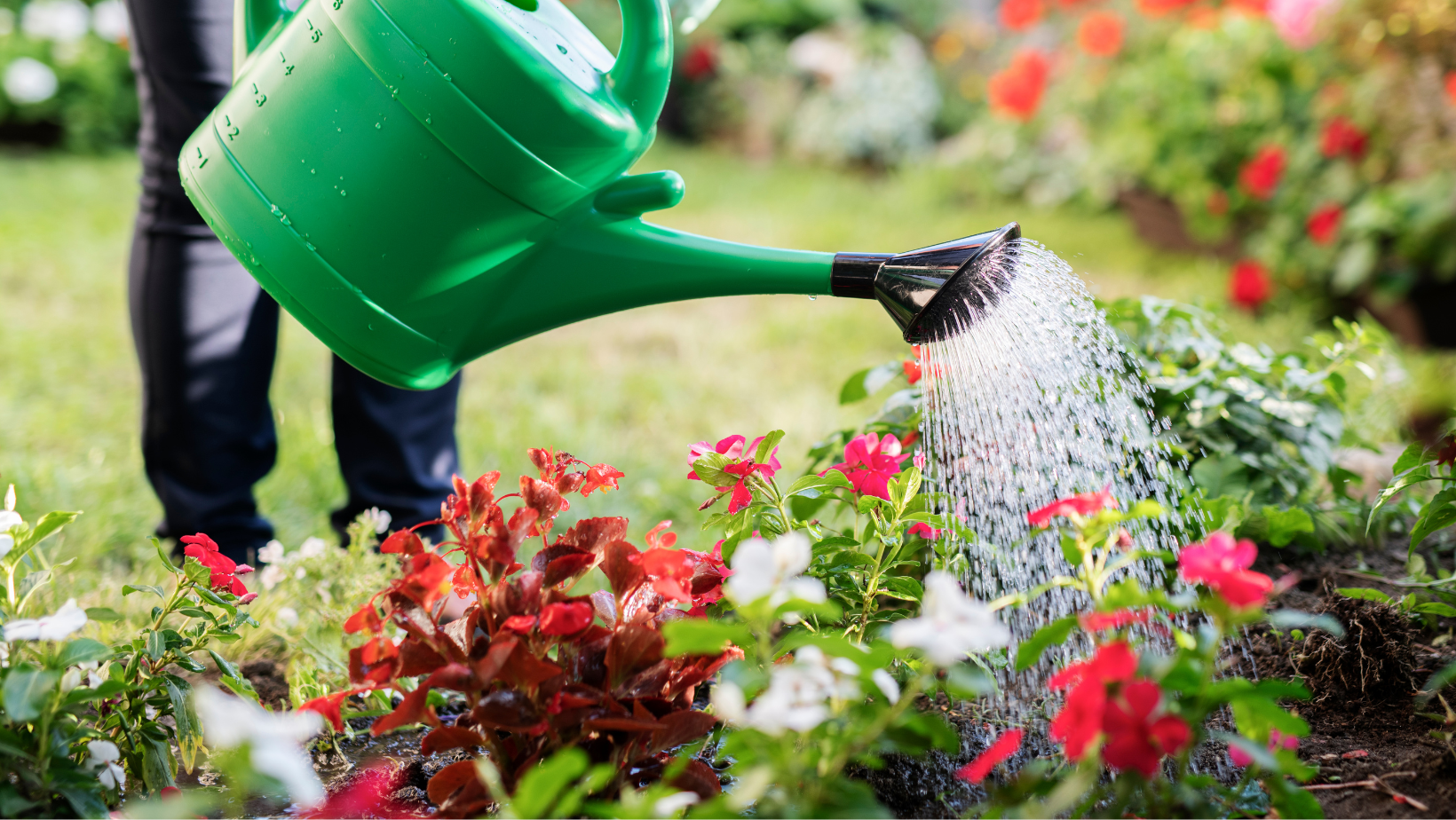

Watering plants in the summer can be a tricky balance between providing enough hydration and avoiding overwatering. The following guidelines will help you maintain your beautiful plants through the hot summer months, ensuring they thrive all season long!
The best time of day to water your plants is in the morning. According to Peter Pappas, an irrigation system designer in Middlesex County, Massachusetts, watering outdoor plants early in the morning reduces evaporation. The cool soil in the morning gives water the best chance of reaching the roots of the plants before evaporating. This early watering ensures that plants have sufficient moisture beneath the soil to withstand the heat of a hot summer day. Watering plants at night is the worst time because when plants remain wet overnight, fungi can take hold, leading to disease and plant damage.
Most garden plants, flowers, and shrubs do best when they receive at least 1 inch of water per week. They may need even more during hot, dry spells. Rain isn’t always sufficient for plants to thrive, so don’t count on it to keep your plants healthy. Instead, keep a rain gauge in the garden to monitor weekly rainfall and if your garden gets less than 1 inch of rain, supplement by watering yourself. Broadcast sprinklers can also be inefficient for watering because they soak the plant’s leaves, increasing the risk of fungal disease. On a hot or windy day, much of the water distributed by sprinklers can evaporate or blow away before reaching the plant, resulting in less water getting to the base of the plant.
Garden plants can suffer when the soil dries out. Most plants can go for a few days up to a week without water, but it’s important to monitor them and make adjustments. On a hot, windy day, the soil’s surface may appear dry while the ground beneath is still moist, so it’s essential to perform a quick check to ensure you don’t overwater. Keep a wooden dowel handy and insert it a few inches into the garden soil. If the dowel comes out clean, the soil is dry and it is time to water. If moist soil sticks to the dowel, continuing to water will be overwatering your plant. Plants don’t like “wet feet,” meaning they also suffer if their roots are sitting in water and not getting sufficient oxygen.
During hot weather, it might be tempting to water frequently to keep the soil damp, but shallow surface watering discourages deep root development. Instead, opt for a less frequent watering routine that thoroughly saturates the soil. Deep watering promotes strong root growth and encourages more resilient root systems. Directing water at the base of your plants delivers hydration right where it’s needed. Water slowly so the water can soak into the soil surrounding the plants and be available to the roots, rather than just running off. A soaker hose is a great tool for this purpose as it soaks the soil slowly and deeply, ensuring healthy growth.
Soil in container gardens and flowerpots dries out more quickly than soil in garden plots or flower beds. The smaller the container, the more frequently you need to water. Drain excess water from the bottom of pots to prevent water-logging. Soak the soil in containers in the morning, and if the temperature climbs to 90°F or above, give them another soaking in the afternoon.
Newly planted trees and shrubs should be thoroughly soaked with water 2 or 3 times per week for the first month. After that, water weekly during their first growing season. After the trees or shrubs are 2 years old, they only need to be watered once every 2 weeks if you saturate the soil around them.
Annual and perennial gardens should be watered in the same way as trees and shrubs. Use a fine-textured mulch or soil conditioner like peat moss to help retain moisture.
Flower and vegetable gardens may require more frequent watering. Rather than lightly sprinkling the beds each day, saturate the areas once or twice a week during drought periods. If wilting occurs, water should be applied more often. Under normal circumstances, twice a week should be ample if mulch is used.
Mulching can help to reduce water loss. It is an excellent method of conserving water, especially for new or established plantings. Mulch beds that are exposed to the sun and drying winds, as these areas dry out rapidly. Use common materials like peat moss, wood chips, straw, sawdust, pine needles, hay, leaf mold, compost, dried bark, or leaves. A two-inch mulch can significantly reduce the amount of water required to maintain vigorous plants.
As temperatures rise above 85°F, expect to water your plants every day to prevent wilting. The key is to water efficiently so the highest proportion of water possible is used by the plants.
Sean Lade, irrigation expert and director of Easy Garden Irrigation, advises gardeners to avoid watering in the heat of the day. Watering at midday when temperatures are at their highest leads to a higher rate of water evaporation, reducing the water available to your plants. Sunlight shining through water droplets on the leaves can create hot spots that can scorch your plants.
Maintaining the right balance of watering during the summer is essential for the health and growth of your garden plants. By following these tips, you can ensure your plants receive the hydration they need without the risk of overwatering.
Sources